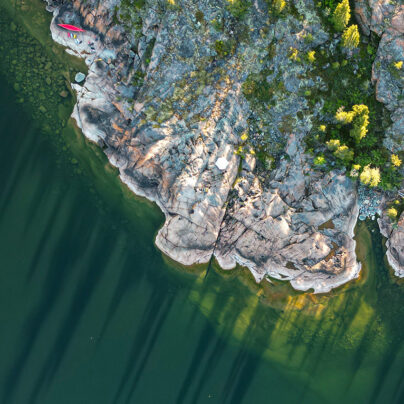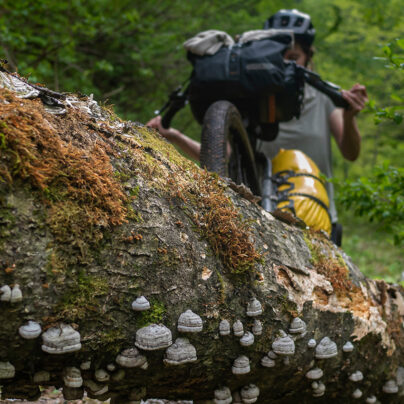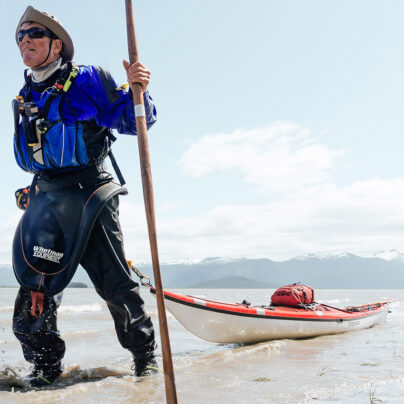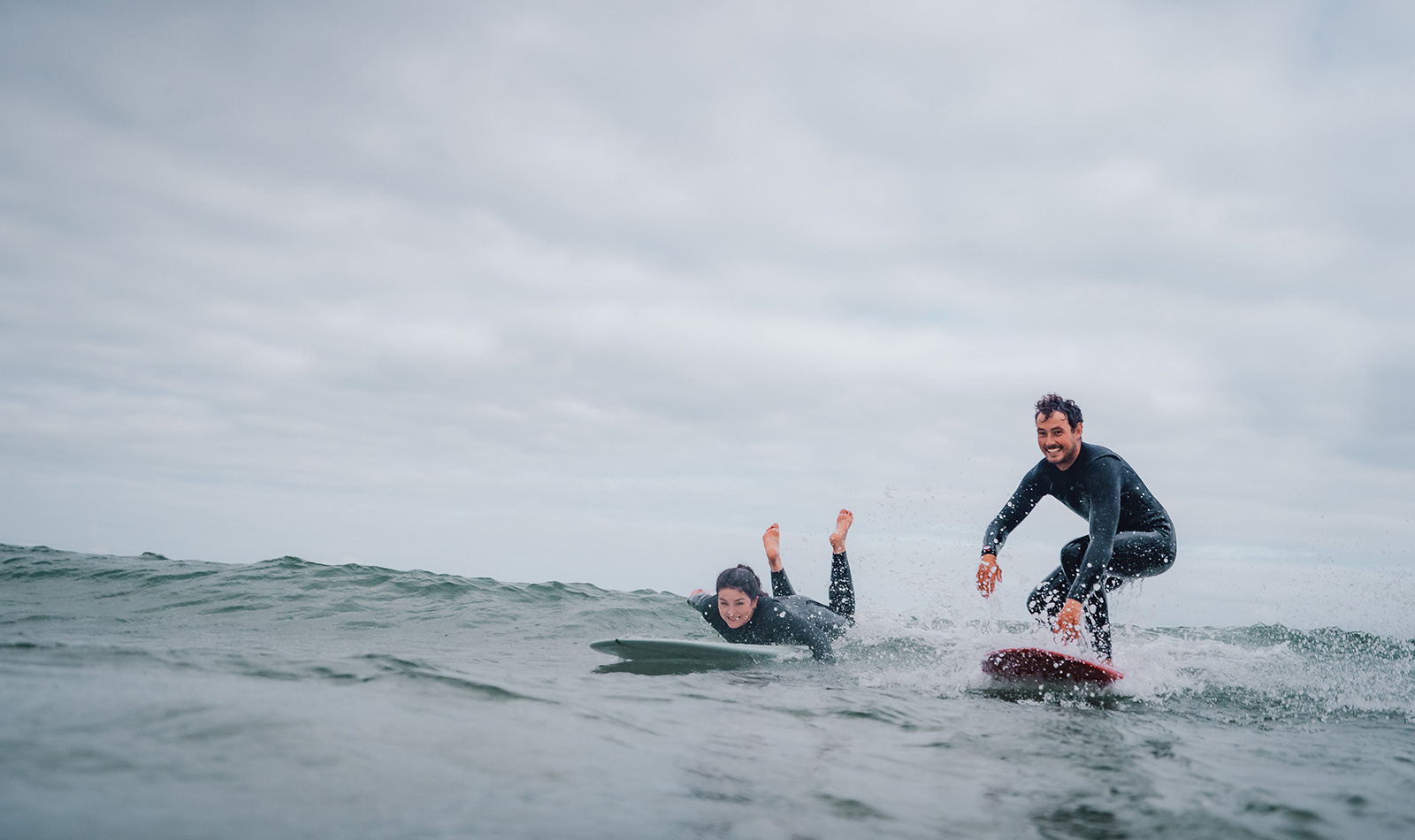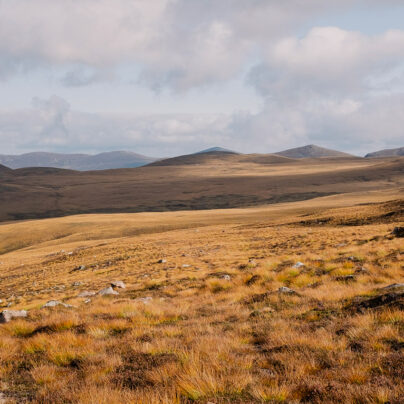Brittany – From the Water
Sidetracked Uncovered
Written by Daniel Neilson // Photography by John Summerton
In the second of a series of articles exploring Brittany, we take to the sea to enjoy family-friendly adventures such as surfing, paddleboarding, and sailing – as well as discover the seafaring history of this French region.
Somewhere below our bows is a resting place of the dead. Orthostats, stones in an upright position, have been arranged in a boat-shaped pattern – the biggest weighs around four tonnes. Once covered by earth, it’s a passage grave that allowed people to revisit the tombs of their ancestors during the Late Neolithic period, 7000—4500 BC. In a few hours, at low tide, we’ll walk across the sandy beach in the afternoon sun and touch these stones at the mouth of the Kérallé River. But for now, we’re bouncing across the waves in our double-hulled pirogue.
The four of us pull our paddles, water splashing our faces. At the tiller, the captain turns, the wind fills the sails, and the Polynesian pirogue accelerates. Now we stow our paddles and enjoy the ride. It’s an exhilarating experience. I can see the dunes of Kernic Bay to our south, and La Manche, the English Channel, to our north. On this day, the sea turns from a Caribbean turquoise through a scale of colour to deep ultramarine. It’s choppy enough to provide just the right amount of fun. In between, rock monoliths punch out of the water; islets formed by the sea and wind, not the strength of Neolithic man.
The souls laid to rest on this northern Brittany coastline would have been seafarers as well. As would the settlers through the Roman period – when two of Brittany’s most famous sons, Asterix and Obelix, would have lived – and to today.
As we return to the harbour at Plouescat, home of the Plouescat Nautical Centre, we pass dozens of fishing vessels and pleasure boats. Three fishermen are bringing in a modest catch in white polystyrene cool boxes as we carry the Polynesian pirogue onto the sands.
The view from Plouescat sums up this part of the northern Brittany coast we are exploring. Wide sandy beaches, dune banks, piles of unusually shaped rocks, offshore islets. Fishing boats, yachts, dinghies, ribs. Two surfers are heading out to see if they can make something out of the modest swell, and a couple of wing foilers are moving at alarming speed through the water (and an alarming distance out). ‘And we see a family taking their first steps in sand yachting under the watchful eye of an instructor, no doubt from the Plouescat Nautical Centre. For, as we’re discovering in our week here, it is the sea that defines Brittany: its history, its cuisine, its landscapes, and its people.
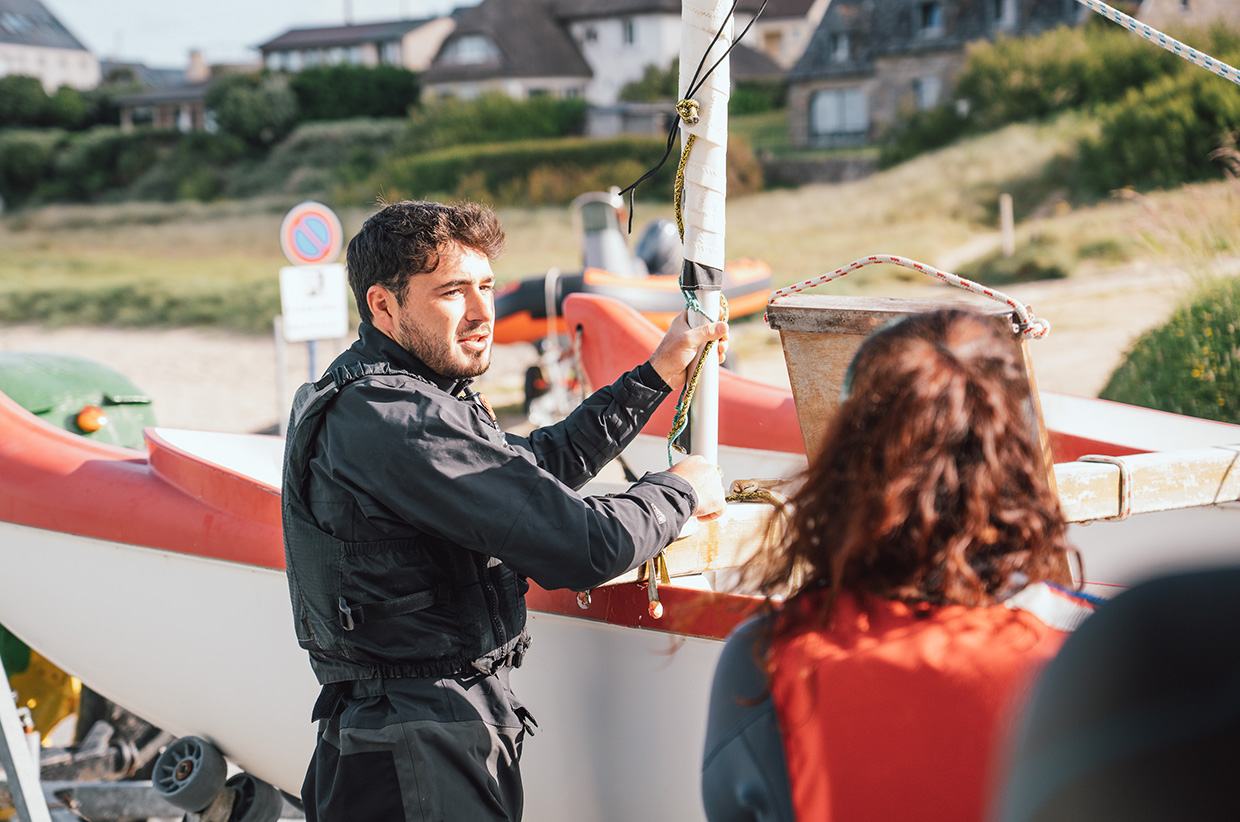
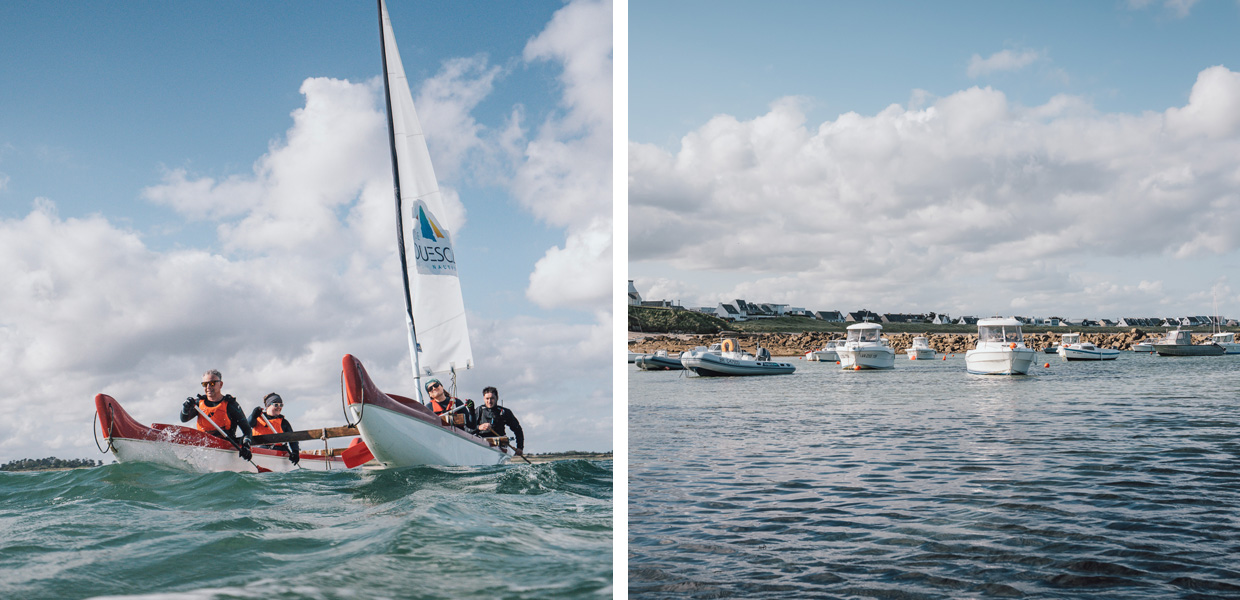
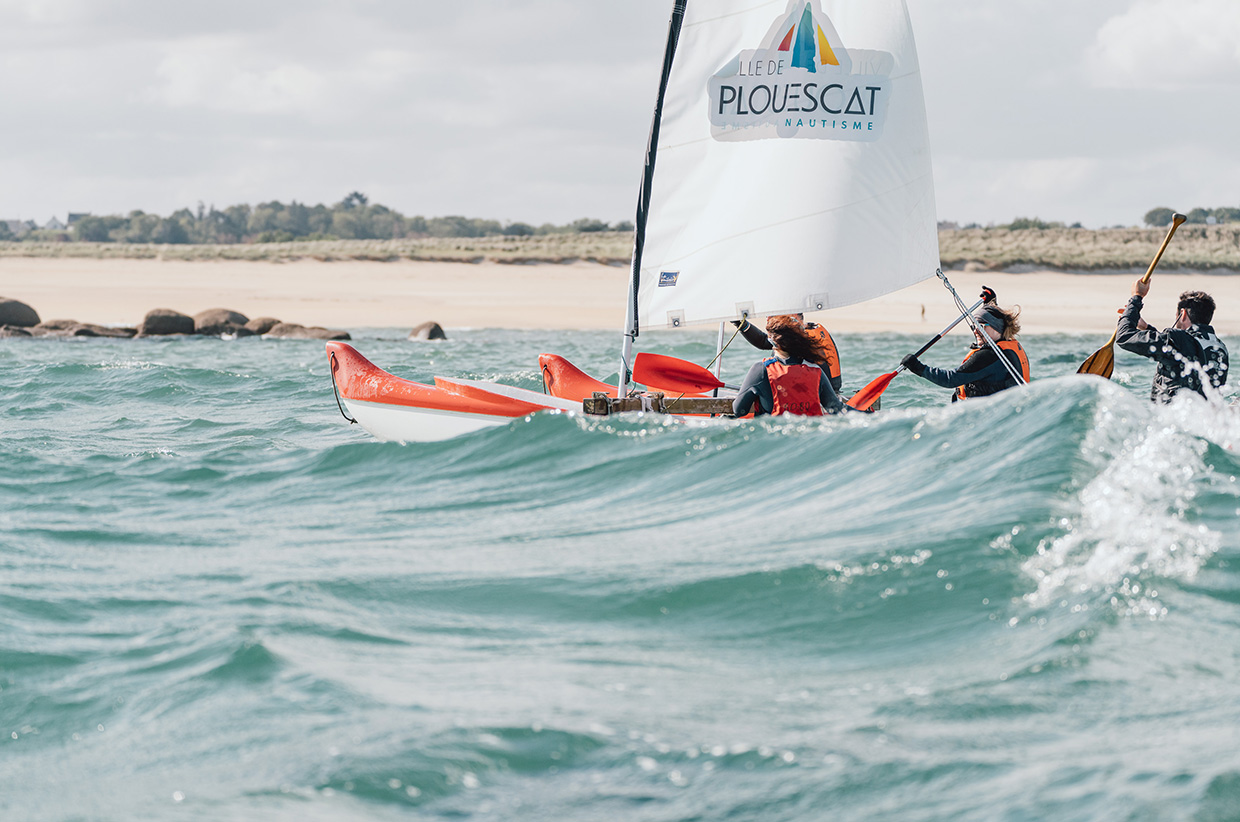
COASTAL CONNECTIONS
In Brittany, being on the water offers the best views and the best adventures. It is the sea that provides much of the bountiful food we eat. And, given the number of megalithic structures we see, this has been the case for thousands of years. Fitting, then, that we began our Brittany journey squeezing into tightly fitted wetsuits and being tossed around by the sea and wind on a Polynesian pirogue – the first of several water adventures, each offering a completely different perspective on Brittany.
It is a road trip of sorts. Look at a map of Brittany, and our week-long journey seems diminutive. We stay along the Pink Granite Coast, hopping from Plouescat to Roscoff, Morlaix to Plousganou, Locquirec to Trébeurden. We surf and paddleboard, feast on oysters and scallops, walk and run its coastline and dip our feet in its waters. This section of coastline is a playground for families. The waves are manageable for all levels and ages, and when it’s flat, let’s get out the paddleboard. When it’s windy, go sailing; when there’s a swell, it’s a surfboard under your arm. When it’s raining? Well, that doesn’t stop the locals, as we learnt.
SURFING
Ciara Cornily and Baptiste Seité are two of the loveliest people you could meet. Over an early morning coffee, we sit down with the couple at a table outside Millin, a restaurant attached to their surf school Surfing Locquirec.
The couple have run this long-established surf school since April 2024, opening an offering to local school children and the community, as well as the families and adventurers who come to Brittany as tourists. In July and August, they also open Surfing Plougasnou a few kilometres along the coast. Here they offer surfing, bodyboarding, and paddleboarding lessons for tourists. It’s a sustainable business model, of course, but it also gets at the heart of what Ciara and Baptiste want to offer: a recognition of the sea’s importance in the community, of the safety everyone who lives by the sea should understand, and also of the fun – and the mindfulness – exploring the water by surfboard or paddleboard can bring.
Ciara and Baptiste are both from Finistère, the westerly peninsula of Brittany. Ciara grew up in Landivisiau, inland from the coast where we sit, but her Irish accent belies her roots. Her mother is from the Emerald Isle. Baptiste, meanwhile, was raised closer to here, around Roscoff, Plouénan.
They come at surfing from different angles. ‘Baptiste’s been surfing since he was a kid,’ Ciara says. ‘For me, it came later. When I was a teenager, surfing started becoming really popular, and I got a board for my birthday. I tried, but it was hard to get into it properly.’ Skateboarding was more Ciara’s thing. ‘But it was only when I started working at the surf school that I really began surfing properly.’
She describes her style with an air of calm certainty. ‘I really like small waves. I don’t like being scared or chasing adrenaline. I prefer it zen, not just surviving in the water. I want to be able to read the waves, be creative on the surfboard, not be on constant alert.’
Baptiste, she tells me, is a bit different. ‘Not the massive monster waves like Nazaré,’ she says with a laugh, ‘but he loves tubes, and is definitely more drawn to the challenging ones.’
As for the coastline, Brittany holds its own among Europe’s surf destinations.
‘Here, the waves are really good quality,’ Ciara says. ‘All around Brittany you can find good surf, it just depends on the conditions. When the wind blows from the south, it’s perfect for this [northern] coast. If it blows north, the south of Brittany gets the good waves. So yeah, if you want to chase the surf, you’re going to need a road trip.’
On the day we arrive, the sea is uncharacteristically calm. Baptiste and Ciara are skilled enough to surf the tiny waves for some photos, but it’s a day more suited to scouting the coastline by paddleboard.
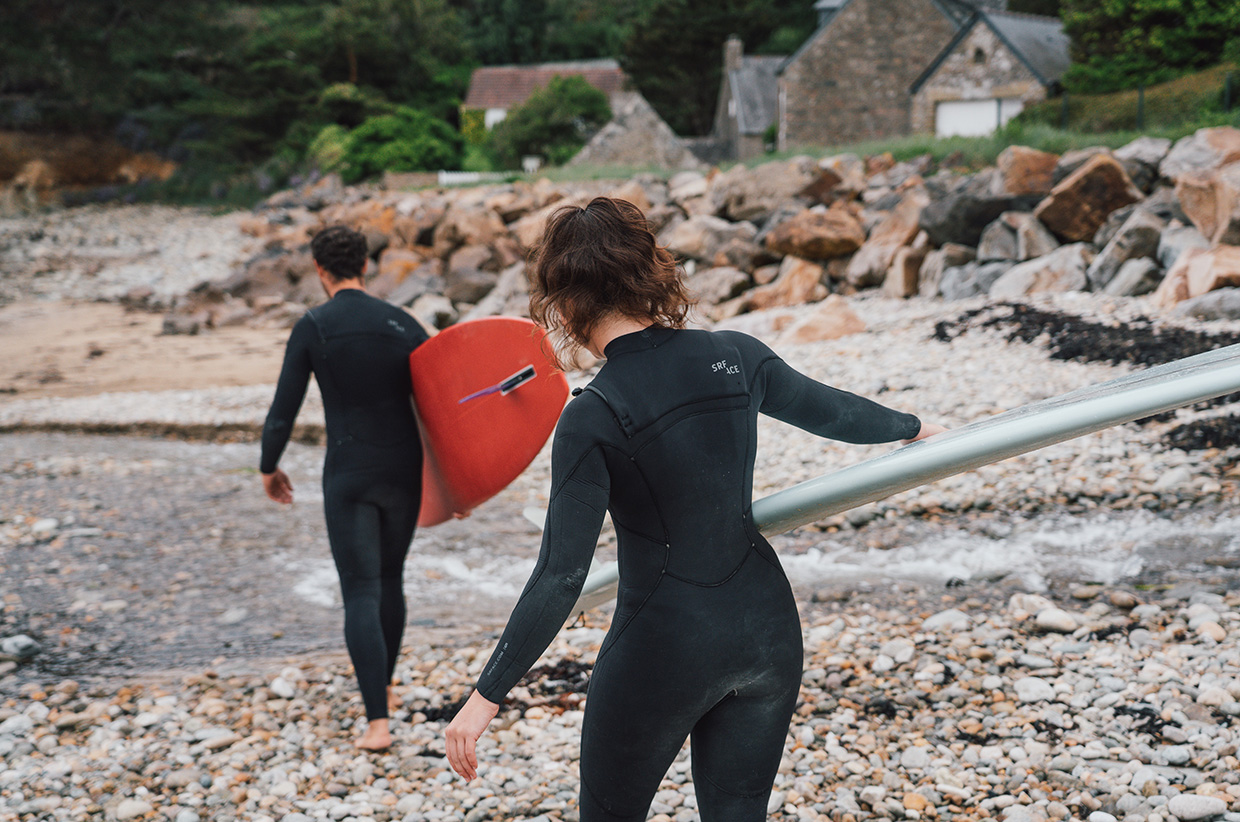
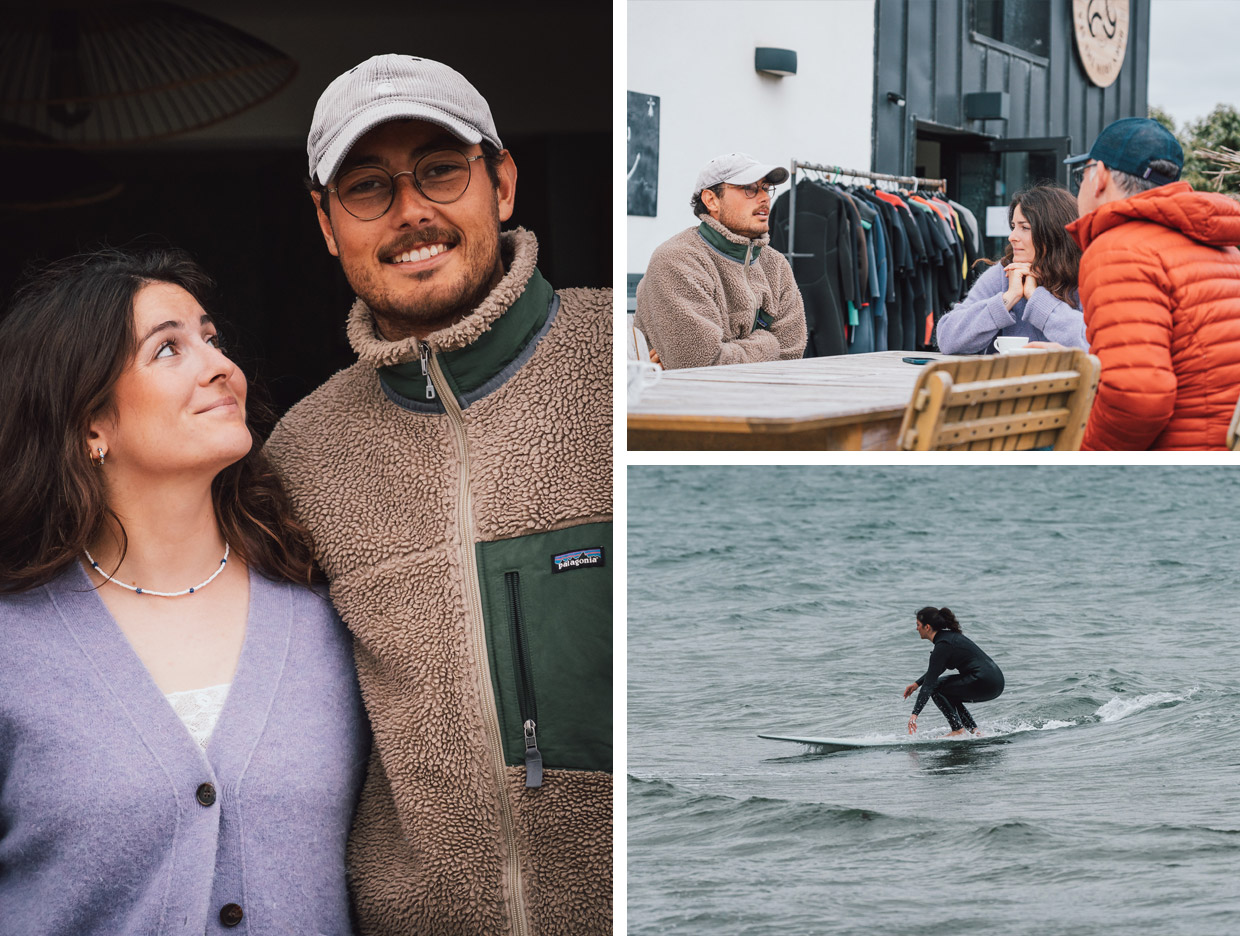

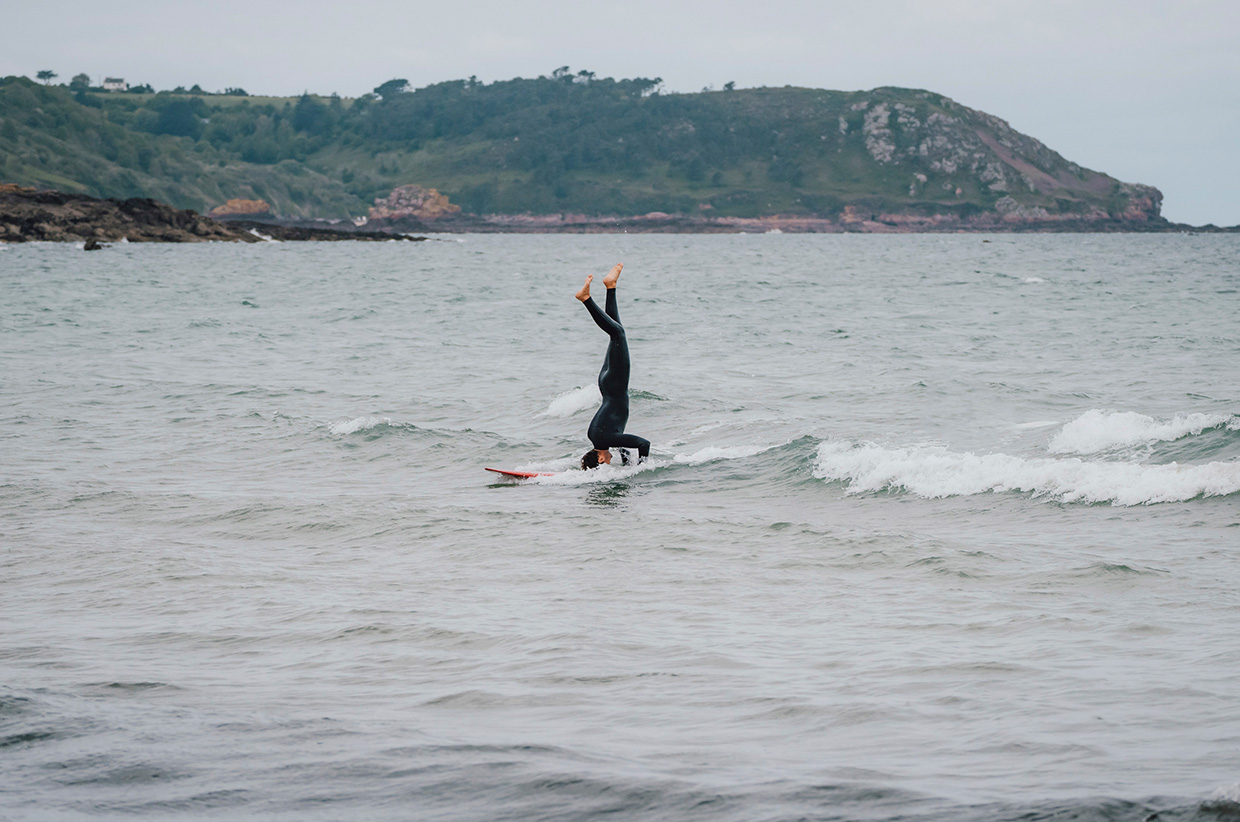
PERSPECTIVE
There are dozens of options in this region, but we put in at Anse de Diben and make north for the Pointe de Primel, one of the few locations where you can rock climb. Caves and coves riddle this rocky coastline. Baptiste climbs high above us and plunges into the deep waters.
Perspective always changes when we dip beneath the surface. Being so connected with the water feels deeply relaxing. Life seems more peaceful, more benign. The conversation between Ciara, Baptiste and me is more personal as we pull ourselves through the water. Occasional swells lead to a few wobbles and a good excuse for a swim. On land, I can see walkers traversing this steep headland. Within a few kilometres, they will come across an 18th-century Maison des douaniers, as well as a customs house, the Ancienne Chapelle Sainte-Barbe dating back to 1455, and the metre-tall Pointe de Primel menhir dating back to Neolithic times.
We return to the surf school and have a frankly incredible smash burger at Millin with Ciara and Baptiste. Chatting about the community of surfers, I realise it is a blend of local and nomadic. ‘It depends on the kind of surfing you do,’ Ciara explains. ‘I longboard; Baptiste shortboards. The shortboarders, especially those doing competitions, they all kind of know each other, mostly through Instagram and events.’
She talks warmly about the gatherings. ‘They’re not really competitions, more like festivals. People meet at these events, and there’s dancing, food, all the Breton culture. Some places, especially the touristy ones, can be a bit slow to welcome strangers. Not unfriendly, just not wide open. But if you take your time, people are lovely.’
They are. Over the next few days, we meet Alexis Deniel, one of Europe’s best surfers, and Perros-Guirec, the owner of Perroz Surf School. He corroborates Ciara and Baptiste’s comments on the friendly community, but emphasises that this coastline is a family destination – a place for tourists from France and further afield. After enjoying a coffee in his shop and cafe Perroz Sehas Side, we wander down to the beach at Perros-Guirec and walk along to Pointe du Château at the end of the bay.
Around 2km offshore is Tomé Island. Today, it’s a bird sanctuary particularly favoured by northern gannets, but in 1648 it was the location of a violent skirmish between Spanish pirates and the local populace, who had had enough of these ‘thieves and pillagers’. At midnight, two barges filled with Breton men boarded the frigate armed axes, pikes, muskets, and cutlasses and took the pirates as prisoners.
The coast of Brittany is full of stories such as this one. Since Neolithic times, as a consequence of its geography, Brittany has been part of the maritime history of the world. Today, it is fishing boats and surfboards, rather than coracles or frigates, that can be seen. But the Bretons’ affinity for the sea is unmistakable. John F Kennedy had a plaque given to him by one of his naval admirals. Inscribed was an old Breton fisherman’s prayer: ‘O, God, thy sea is so great and my boat is so small.’ It sat on his Oval Office desk throughout his presidency.
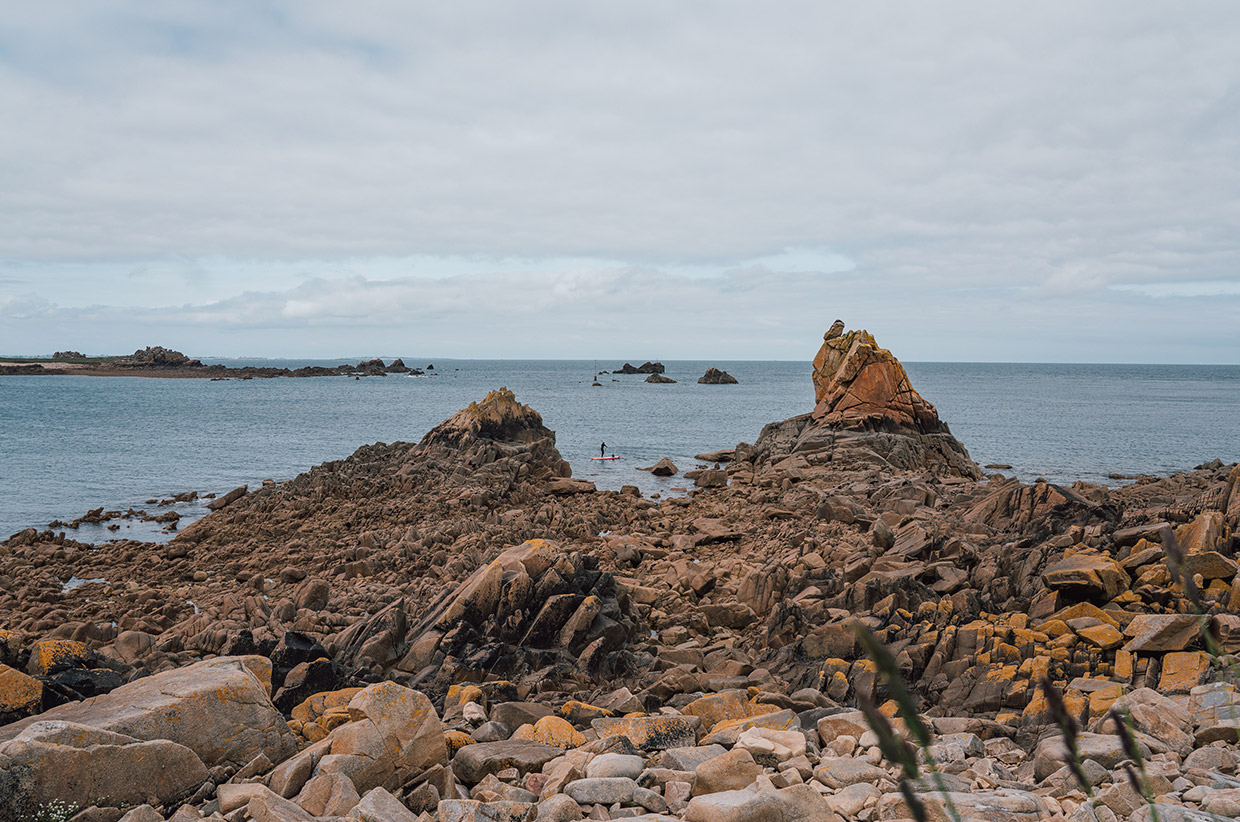

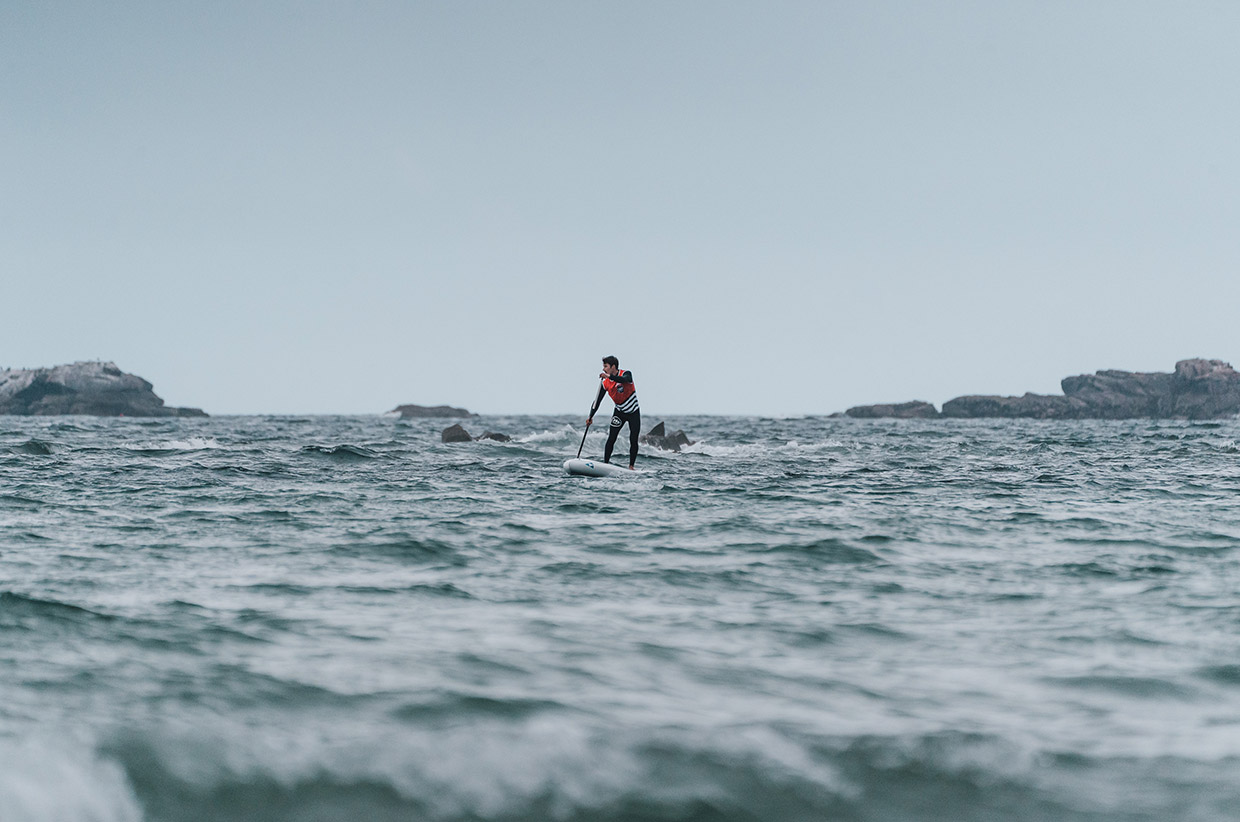
ACTIVITIES
Surfing Locquirec // Locquirec
Surf lessons seven days a week, in groups or privately, with rates that include equipment (boards and wetsuits), insurance and lessons lasting 1.5 to 2 hours. They also offer paddleboarding and handi surf in locations around this coastline.
surfing-locquirec.com
PSS Surf School // Perros-Guirec
Perroz Surf School (PSS) is located right in the bay at Perros-Guirec, and is open from mid-March to the end of December. The school director is Alexis Deniel, one of Europe’s best surfers. Take a single surf or paddleboarding lesson, or join a group session. You can also hire equipment. The best conditions are within a four-hour window around high tide.
pss.bzh/perroz-surf-school
Surfing Plougasnou // Plougasnou
Surfing Plougasnou is actually the same as Surfing Locquirec, and is located next to the SNSM post, on the beach of Primel-Trégastel. This location is open in July and August. Activities include surfing, bodyboarding, and stand-up paddleboarding lessons.
surfing-locquirec.com
Plouescat Nautical Centre // Plouescat
There is a wealth of activities to enjoy at the Plouescat Nautical Centre. We went on the Pirogue to experience a blend of sailing and paddling, but you can also enjoy sailing, paddleboarding, sea kayaking, wing foiling, and sand yachting.
plouescat-nautisme.fr

For more information, visit brittanytourism.com // @visitbretagne_official
Words: Daniel Neilson // @danieljneilson
Photography: John Summerton // @johnsummerton
